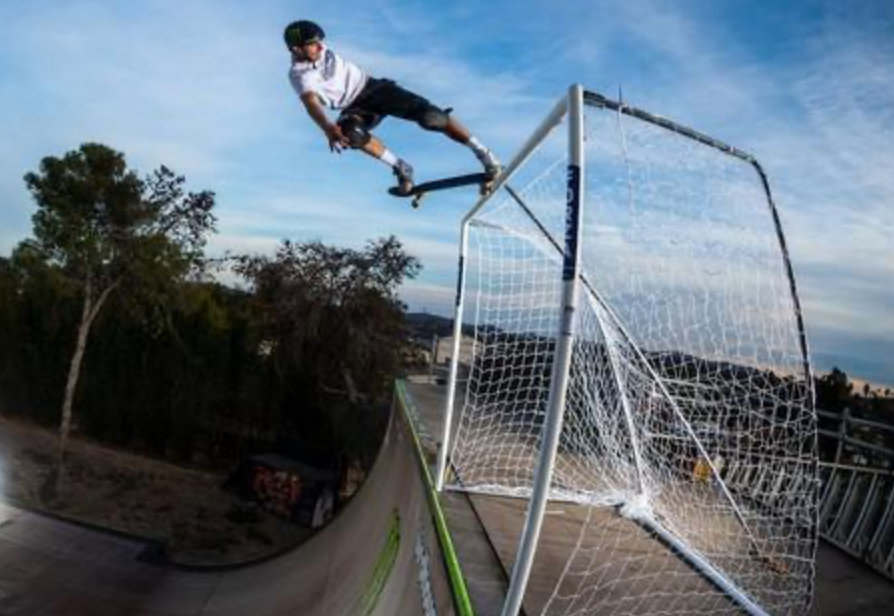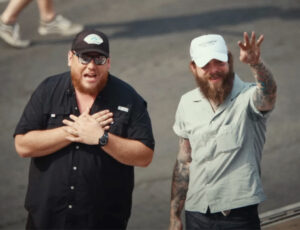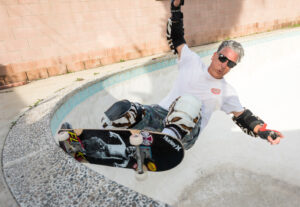Street took over the world decades ago. Magazines, shoe deals, and YouTube algorithms all leaned toward crusty ledges, DIY spots, and nollie flips down stair sets. Vert was dismissed as relic skating—too clean, too polished, too ‘X Games 2003.’ The ramps got torn down, the parks redesigned. It felt like vert was fading out with the last of the mega-contests.
But Tom Schaar didn’t get that memo.
His new part, “Vert’s Not Dead,” is a shot of adrenaline straight to the core of modern skateboarding. It’s not just a statement piece—it’s a 7-minute warpath that reasserts vert as not just relevant, but radical. It’s faster, heavier, more technical, and more free than anything we’ve seen on a ramp in a decade.
Tom Schaar has always been ahead of his time. Now, he’s right on time—with a part that might just bring vert back to life.
The Setup: A Title That Doubles as a Manifesto
The title “Vert’s Not Dead” does more than name the part. It plants a flag. It’s a counterpunch to every kid who thought skating was only cool if it happened on a curb or a handrail. It’s a callback to punk slogans and zine covers from an era when skateboarding was more outsider art than Olympic sport.
It’s also deeply personal. Schaar is one of the few skaters alive who could’ve turned his back on vert and gotten away with it. He was the first to land a 1080 at age 12, the youngest X Games gold medalist, and one of the few crossover skaters to earn respect from both the vert and park communities. He had nothing left to prove.
But instead of coasting or conforming, he built something—and he built it up a wall.
The Part: 7 Minutes of Pure, Unfiltered Vert Violence
Let’s talk about the footage. Seven minutes of top-to-bottom vert skating. No filler. No slo-mo montages or dramatic build-ups. Just trick after trick, drop after drop, filmed tight and raw in a way that makes you feel every hit.
The part opens with a 540 alley-oop tailgrab to fakie, no warm-up. It’s like walking into a conversation mid-sentence and immediately getting punched in the chest. From there, Schaar launches into a barrage of switch variations, tech grabs, lip tricks, and what can only be described as aerial gymnastics with a punk edge.
The switch backside ollie into late shove-it should be illegal. The nollie heelflip lien is a middle finger to physics. And the kickflip McTwist late re-entry—yeah, that’s not just skating. That’s redefining the way a ramp can be read.
He doesn’t just ride the ramp. He re-maps it.
Beyond Tech: Control and Chaos in Equal Measure
What makes “Vert’s Not Dead” so remarkable isn’t just the difficulty of the tricks—it’s the control.
Schaar doesn’t look like he’s fighting the ramp. He looks like he’s in dialogue with it. His carves are deep, his grabs are stylish without being showy, and his landings don’t just stick—they slide into place like punctuation marks.
But there’s chaos, too. You can see it in the speed, in the commitment, in the slams that made the final cut. This isn’t sanitized vert skating. It’s unpredictable. You’re holding your breath with every air, every approach to coping, every fakie drop-in from 15 feet up.
Tom isn’t just skating a ramp. He’s wrestling with vert’s legacy—and winning.
Filming Style: No Gloss, Just Guts
Props to the filmers and editors here. This part could’ve easily gone Hollywood—drones, sliders, dramatic scores. But it doesn’t. It stays grounded in skate video language. The fisheye is raw and low. The long lens clips are tight and aggressive. The sound of trucks hitting metal is left in, not polished out.
The music is fast. Dirty. It bleeds energy. There’s no pause, no slow build. It jumps right in and never lets go, matching Schaar’s rhythm perfectly.
The decision to not overproduce is crucial. It lets the skating speak. And what it says is: vert isn’t museum skating. It’s alive, messy, and coming straight for your throat.
Legacy Check: Vert Was Supposed to Be Dead. This Is a Revival.
For years, vert was treated like a niche. You’d catch a vert contest on TV once a year. Maybe a clip on Instagram. But as far as the industry was concerned, vert was nostalgia. Something to respect from a distance. Not something to push.
But skateboarding’s weird like that. It eats its young, forgets its legends, and then—just when you think something’s gone—it comes back in a wave.
This part is that wave.
It doesn’t beg you to respect vert. It dares you not to. It doesn’t sell you vert as the next trend. It presents it as an undeniable force—alive, kicking, and throwing 900s in your face.
And at the center of it is Tom Schaar, not asking for approval but setting the tone.
The Cultural Weight: Skateboarding Needs This Right Now
We’re in a weird era for skateboarding. It’s in the Olympics. It’s in the fashion world. It’s on every commercial, every campaign. That’s not a bad thing—but it does mean that raw, rule-breaking skating has to work harder to cut through.
“Vert’s Not Dead” cuts through. Hard.
It reminds us that skateboarding isn’t just about trends or cool points. It’s about performance. About pushing yourself beyond the edge of safety. About respect for the craft.
In a scene flooded with staged lines and IG-friendly tricks, Schaar’s part is risky, dangerous, and hard to replicate. And that’s exactly what makes it exciting again.
What This Means for the Next Generation
Here’s the most important part: kids are watching.
Vert skating has always had a barrier to entry—ramps are expensive, hard to access, and rare. But this part might light a fire. It might inspire a new generation to find the nearest ramp, build one in a field, or throw on pads and go vertical.
Skating needs diversity—not just in people, but in style. We need ramp rats as much as plaza kids. We need vert icons, not just street legends. Schaar’s part is more than entertainment—it’s permission. For kids who don’t fit the mold. For skaters who still dream in transitions and wear knee pads without irony.
Vert isn’t dead. And now, it’s cool again.
Final Thoughts: A Part That Punches History in the Mouth
Tom Schaar didn’t have to make this part. He didn’t have to throw his body off 20-foot coping or stitch together a part with tricks that most of us can’t even name. He could’ve coasted on contests and stayed in the lane that pays.
Instead, he dropped one of the most important vert parts in recent memory.
Not because it’s the cleanest. Or the longest. Or the gnarliest.
But because it’s honest. It’s relentless. And it tells a truth that skaters needed to hear:
Vert’s not dead. It’s just been waiting for someone to bring it back.
And that someone is Tom Schaar.
No comments yet.







